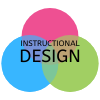Assessment is a very important part of the learning process. Assessments show if the students are meeting the learning goals and learning objectives. There are two forms of assessments, summative and formative. Summative assessments usually produce a grade at the end of a unit, course, or programs; such as mid-term and final exams. Formative assessments take place during the learning process to provide feedback to the learners on their areas of strengthens and areas of needed improvement and allow instructors to evaluate and make changes to the delivery of content.
Different Ways to Perform Assessments:
- Just-in-Time Teaching (JiTT): Students respond to 3 warm-up questions (2 key-principal questions and 1 open-ended/application question) up to 2 hours before class starts. The instructor reviews the students responses and adjusts in-class content deliver based on the students’ written responses and understanding of the content.
- Post It Notes/Index Cards: Students write summaries, answer quick questions, ask questions, or jot down misunderstandings about instruction or content on post-it notes or index cards during class. Then, at certain times, half-way through class, at the end of class, or during a break, collect the post-it notes/index cards from students. Now, the instructor can quickly see what content needs to be reviewed, which students he/she may need to meet with, and/or adjust content delivery.
- Quizzes: Quizzes can be completed by students after watching a video or finishing a reading before class to see if students are understanding the concepts. Quizzes can be given through Canvas, Google Forms, or Qualtrics.
- Videos with Quizzes: Quizzes can be embedded in to videos using different resources; such as Camtastia, Panopto, and Educanon. Having the quiz questions embedded into the video, allows the students to stop and process information before moving on to new content or allows the student to go back and rewatch the video he/she is not understanding the content.
- Interactive Student Response Systems (ie Clickers, Turning Point, Socrative, Kahoot, etc): Interactive student responses systems can allow of immediate assessment of students understanding of concepts with quick response questions. There are software programs and handheld devices; such as Clickers or Turning Point, that can be used. Or students’ mobile devices can be used through websites and apps; such as Socrative or Kahoot.
- Exit Tickets: Exit tickets are a good way to see how students understood an in-class lecture or topic. Give students 2 to 4 questions to answer as they leave the classroom about the topic covered. Questions could be short answer or application question.
- Discussion Boards: Creating a discussion inside class can be difficult; however, discussion boards is another strategy to help create a sense of community within your course and assess students’ understanding of concepts.
- Rubrics: Providing the students with a rubric and modeling how the rubric will be used to assess a final project, group discussion, presentation, writing or essay will give guidance, but also give the students the ability to be creative on his or her work.
- Social Media: Like discussion boards, social media can help create a community in a course and can be used as assessments.
- Facebook: Your course can have a private group or page where you can post questions for discussions, take a class poll, or your students can post items they have found that go along with concepts being covered in class.
- Twitter: Students can tweet questions about readings or lectures, or students can tweet answers to a question the professor asks during lectures or class.
A Few Instructional Design Assessment Tools Websites
- Google Forms
- Kahoot
- Qualtrics
- Socrative
- Poll Everywhere
- Blogger
- Facebook in Education
- PlayPosit
The research indicates that improving learning through assessment depends on five, deceptively simple, key factors
- the provision of effective feedback to pupils;
- the active involvement of pupils in their own learning;
- adjusting teaching to take account of the results of assessment;
- a recognition of the profound influence assessment has on the motivation
and self-esteem of pupils, both of which are crucial influences on learning; - the need for pupils to be able to assess themselves and understand how to
Black, P. & Wiliam, D. 1999. Assessment for Learning: Beyond the Black Box, Assessment Reform Group, University of Cambridge, School of Education
